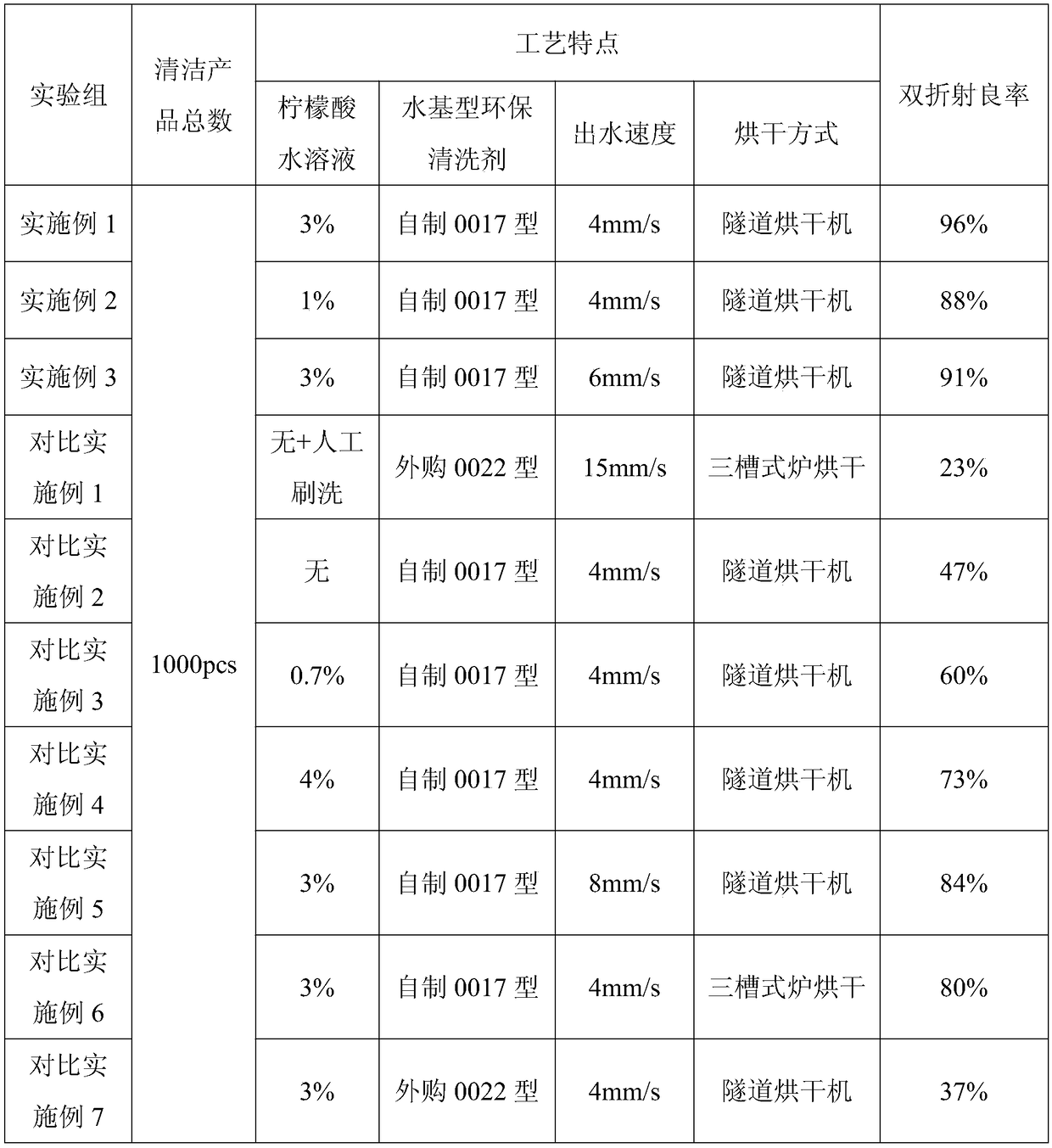Optical glass surface ultra-clean cleaning method
A technology for optical glass and glass surface, applied in cleaning methods and utensils, cleaning methods using liquids, chemical instruments and methods, etc., which can solve unfavorable product quality control and improvement, unstable product cleaning effect, and inability to effectively remove dirt To avoid unstable product quality, reduce water residue and dirt residue, and avoid adverse effects
- Summary
- Abstract
- Description
- Claims
- Application Information
AI Technical Summary
Problems solved by technology
Method used
Image
Examples
Embodiment 1
[0026] A method for ultra-clean cleaning of optical glass surfaces, comprising the steps of:
[0027] Step 1): Soak the glass that has completed the grinding and polishing process in normal temperature water, so as to avoid dehydration and solidification of the grinding powder on the glass surface;
[0028] Step 2): Soak the glass in an aqueous solution of citric acid with a mass fraction of 3% at 60°C, and use ultrasonic cleaning for 4 minutes to soften the mill powder and reduce the adhesion of the mill powder;
[0029] Step 3): Soak the glass in pure water at 60°C and use ultrasonic cleaning for 4 minutes to remove most of the residual acid on the glass surface;
[0030] Step 4): Soak the glass in a water-based environmental cleaning agent with a mass fraction of 3% at 60°C, and use ultrasonic cleaning for 4 minutes to neutralize the acid and remove some residual dirt on the glass surface;
[0031] Step 5): Soak the glass in a water-based environmental cleaning agent with ...
Embodiment 2
[0037] The difference from Example 1 is that the mass fraction of the aqueous citric acid solution used in step 2) is 1%.
Embodiment 3
[0039] The difference from Example 1 is that the water outlet speed of the glass in step 7) is controlled to be 6mm / s.
PUM
 Login to View More
Login to View More Abstract
Description
Claims
Application Information
 Login to View More
Login to View More - Generate Ideas
- Intellectual Property
- Life Sciences
- Materials
- Tech Scout
- Unparalleled Data Quality
- Higher Quality Content
- 60% Fewer Hallucinations
Browse by: Latest US Patents, China's latest patents, Technical Efficacy Thesaurus, Application Domain, Technology Topic, Popular Technical Reports.
© 2025 PatSnap. All rights reserved.Legal|Privacy policy|Modern Slavery Act Transparency Statement|Sitemap|About US| Contact US: help@patsnap.com

